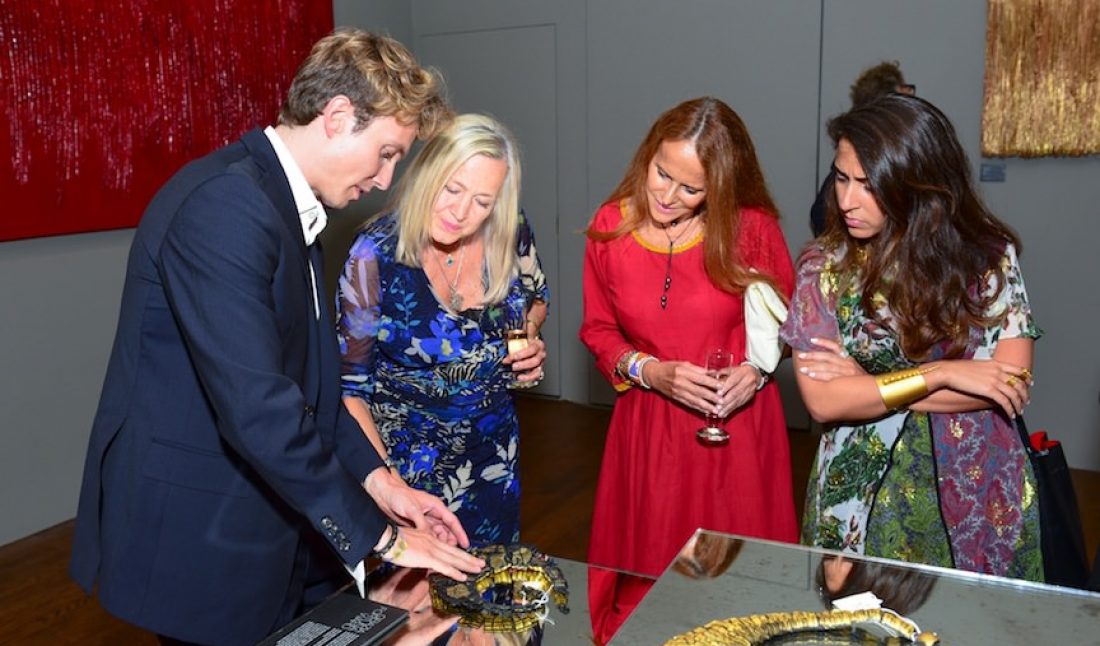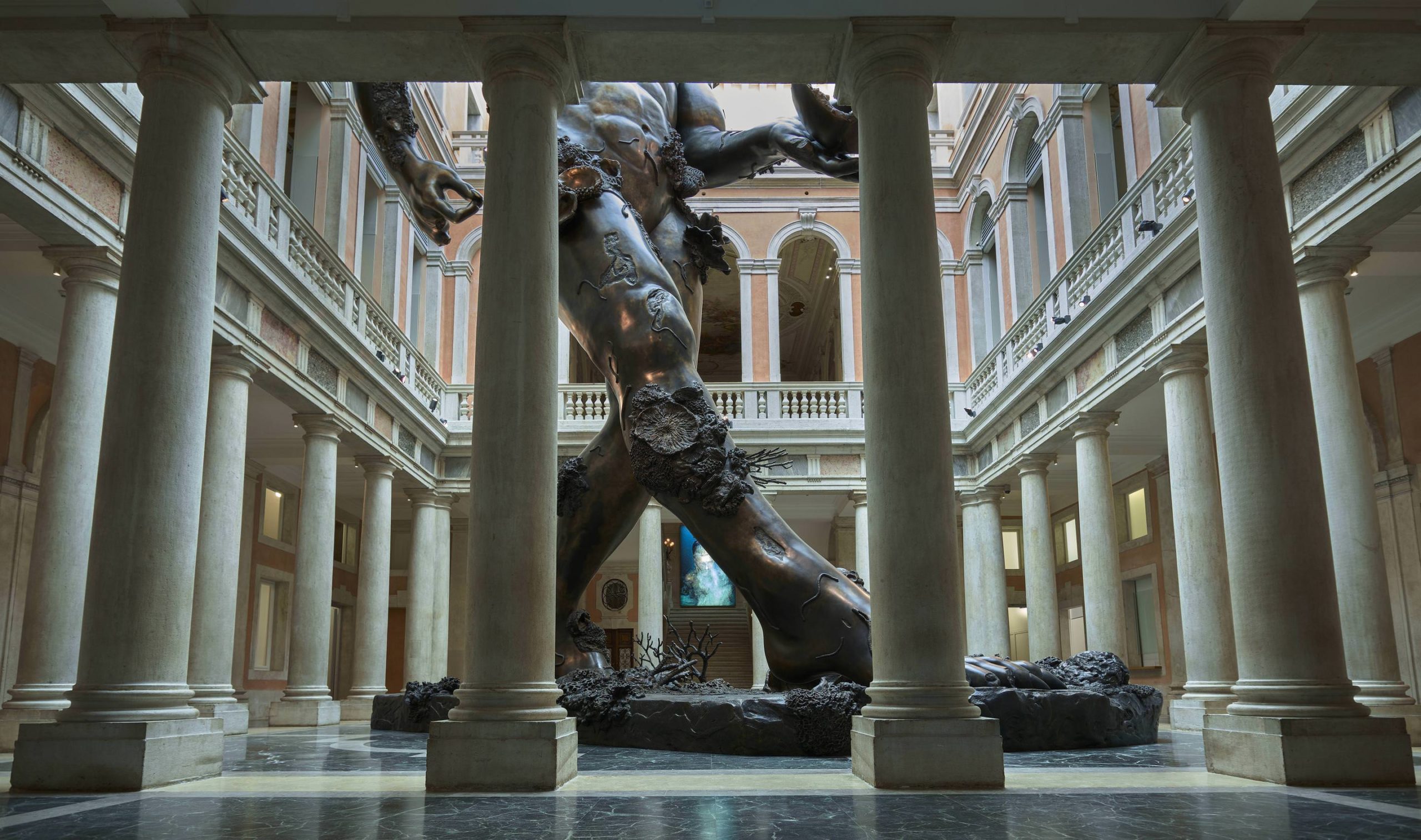Urban Zen, the nonprofit organization run by fashion pioneer Donna Karan, was established to help the community at large, and in a fashionable, communicative way.
After losing her beloved husband, artist Stephan Weiss, to a battle with lung cancer in 2001, and friend, model, and creative director of DKNY, Lynn Kohlman, to brain cancer in 2008, Donna Karan made it her mission to provide cancer patients with healthy assistance alongside their treatment. She donated $850,000 to the Beth Israel Medical Center, and extended her efforts to gaining a new kind of care to the hospital’s cancer wing. With the implementation of “integrated therapists,” a cancer patient will be able to receive assistance from a third party—not the doctor, not the nurse, but someone to teach easy yoga poses and breathing techniques to ease the discomfort and anxiety of cancer’s related discomforts. This, mind you, was just where Urban Zen all began.
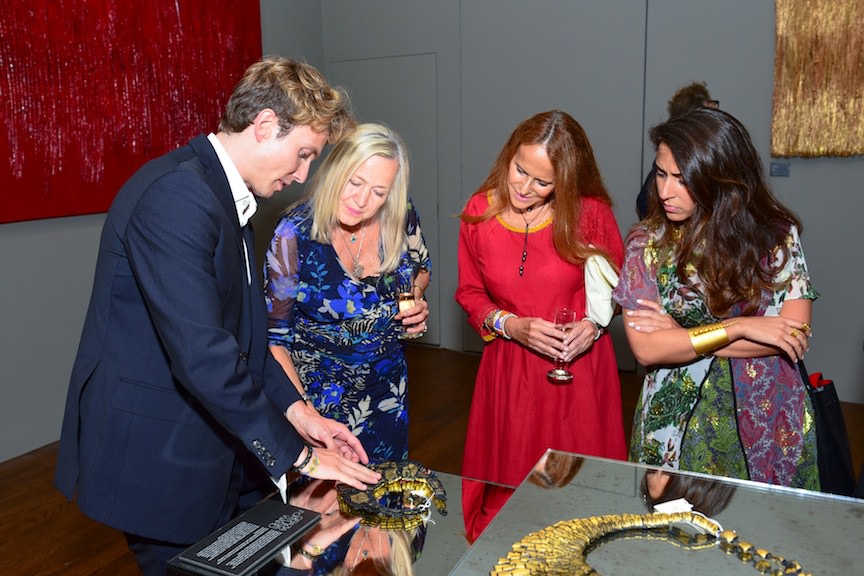 Donna Karan and Urban Zen Present Grazia Fortuna, Fashion Meets Art
Donna Karan and Urban Zen Present Grazia Fortuna, Fashion Meets ArtNot long after, Karan established a home for the Urban Zen Foundation, and it was a space where she felt belonged to the community, more than for herself. Located in her husband’s former art studio, the nonprofit establishment houses like-minded partnerships that offer globally inspired clothing styles, jewelry, and furniture—all of which propel Karan’s “philosophy of living.” The organization’s mission is to create, connect, and collaborate with professionals to find solutions and implement change for preserving cultures, empowering children, and upholding overall wellbeing. After working with an array of varied cultures, artisans, and communities, Urban Zen has proven that a sustainable method for any community is possible.
Last month, fashion met art for an inspirational night as Karan welcomed Italian artist Grazia Fortuna Ward (GFW) to debut a selection of her fine art and jewelry, and alongside Urban Zen’s existing displays of handcrafted wood furniture from Haiti, Miss Haiti Universe, Christie Desir, also welcomed guests to discuss the foundation’s initiatives. Venice-born GFW studied at the Academy of Fine Arts and began her “Art to Wear” creative profession with a project for the Guggenheim Foundation in Venice. Works from GFW—select handcrafted jewelry pieces, multidimensional art pieces topped with gold, and a time-lapse video of GFW’s creative process—were displayed in the establishment’s middle room
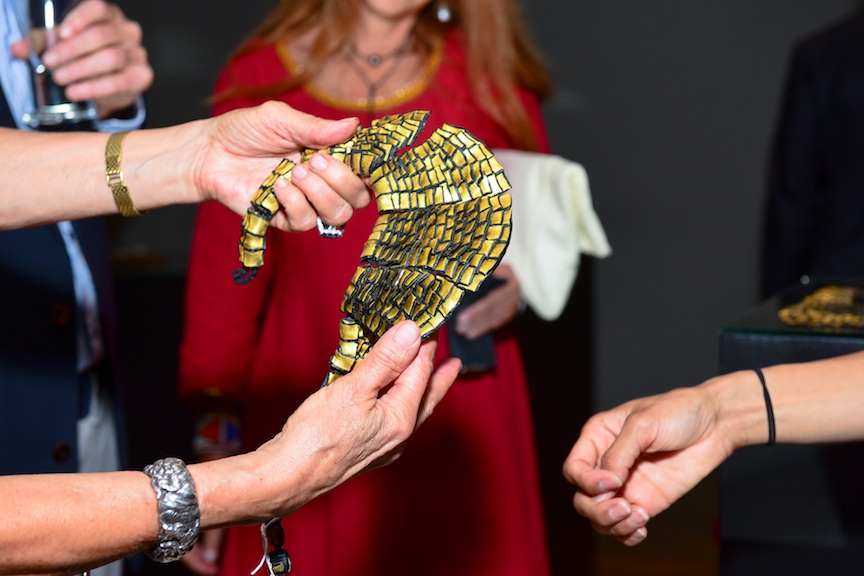 Urban Zen, 705 Greenwich Street, NYC
Urban Zen, 705 Greenwich Street, NYCWe spoke to GFW to get a closer look at how the collaboration flourished, her inspiration and creative process, and how art and jewelry became her passion.
WHITEWALL: How did you and Donna Karan meet/partner together?
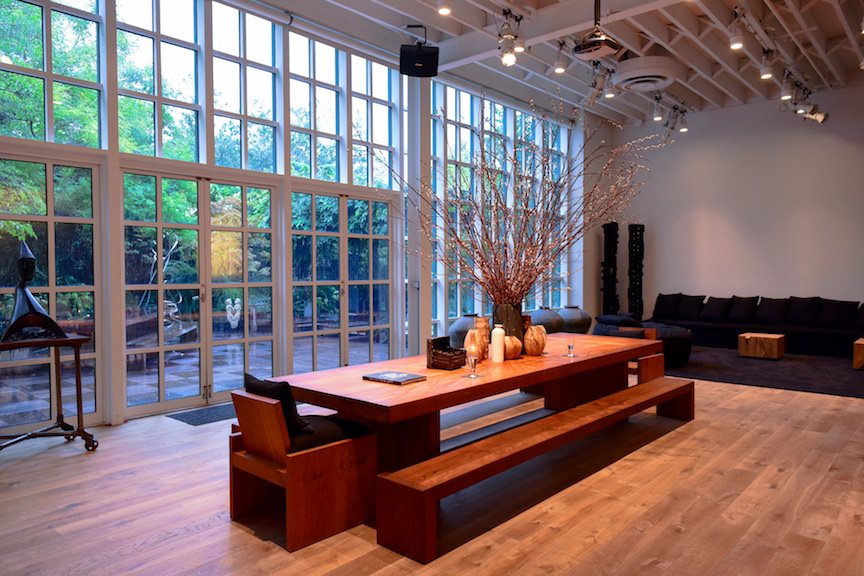 September 10, 2015
September 10, 2015GRAZIA FORTUNA WARD: I had the chance to meet Donna last year. And it was a great emotional and inspiring connection. She understood the artistic input and evolution behind my work, and I am very thankful for everything she has done.
WW: When did you begin your creative process?
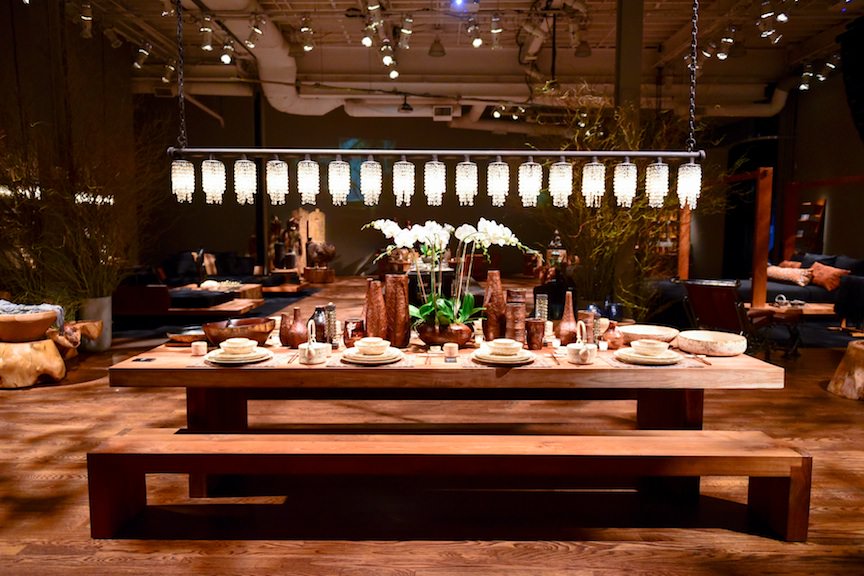 ©Patrick McMullan
©Patrick McMullanGFW: My artistic journey started many years ago when I was 15 years old. My father was an artist himself—he was a sculptor. I inherited my hand from him. Nonetheless, he did not want me to study art, so I literally had to run away from home and hide the fact that I was attending art school from my family for almost one year.
WW: When did it transition to fine art to jewelry making?
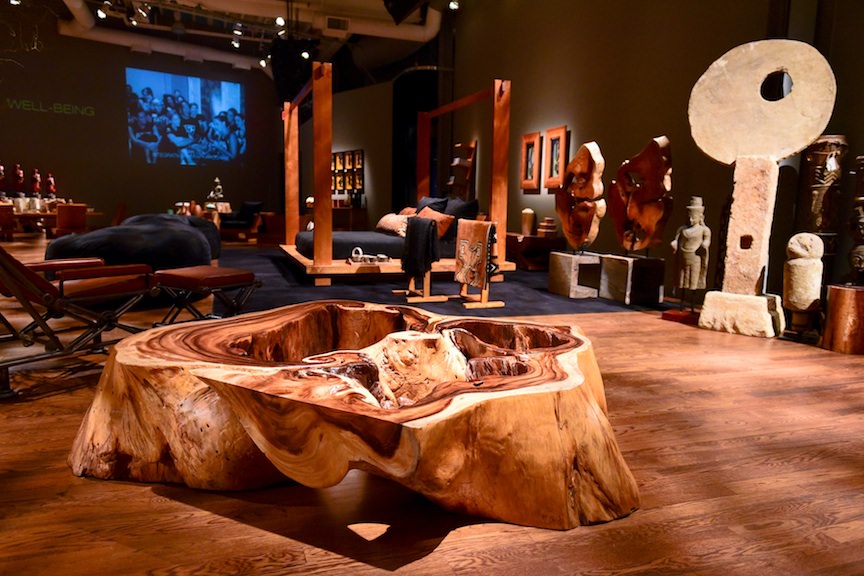 Photo – Sean Zanni/PatrickMcMullan.com
Photo – Sean Zanni/PatrickMcMullan.com
GFW: The Art To Wear stage is the youngest one of my career. In the past 35 years, my work has evolved so many times. Going from figurative art to interior design, and then ultimately to the paintings that are now displayed at Urban Zen. Those paintings, relate to my father’s work as well, as I have always been fascinated by the way he worked to give such soul and harmony to natural materials. They are the key to understanding the evolution of Art To Wear, and the jewelry presented here in New York. Each painting is not only the inspiration behind most of the pieces, but the same materials and pigments—sand, porcelain powder, gold leaves—in different amounts, are used in both. Everything is connected. To me, while I was working on a paining one day, it came natural to develop a pair of earrings. I loved the painting so much that I wanted to wear a piece of it everyday. And that is how it started.
WW: Where is most of your inspiration found?
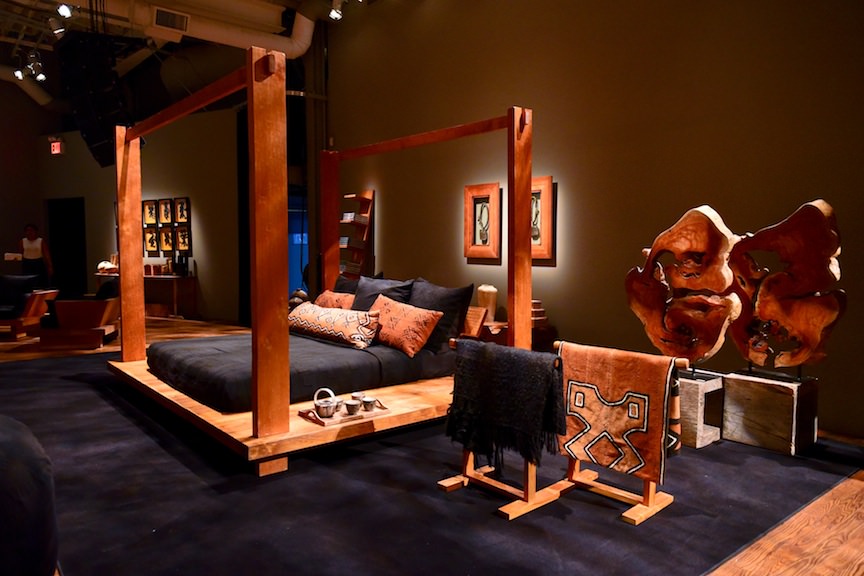 Atmosphere
AtmosphereGFW: I see and feel things everyday that flash in my mind. Colors, textures, shapes, emotions, people—but mainly work. As I work on something, the inspiration for the next thing comes right after. It’s a never-ending magical game that my mind plays with me, which often leads to consecutive days pretty much locked up in my studio with my cat. He is the only one in the family who can stay with me in there for so long!
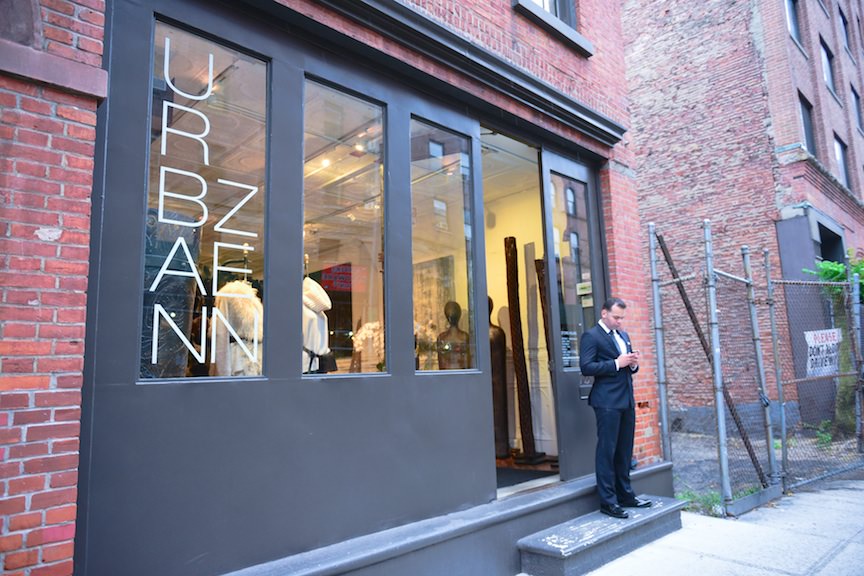 Donna Karan and Urban Zen Present Grazia Fortuna, Fashion Meets Art
Donna Karan and Urban Zen Present Grazia Fortuna, Fashion Meets Art






